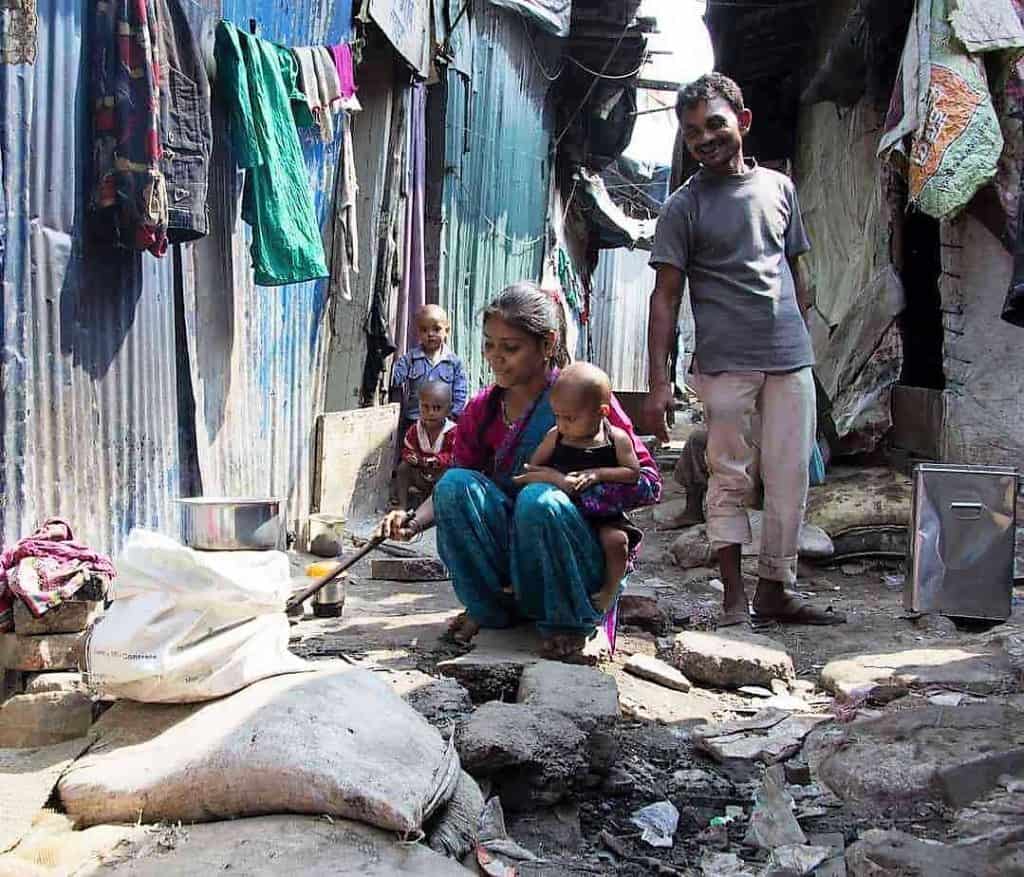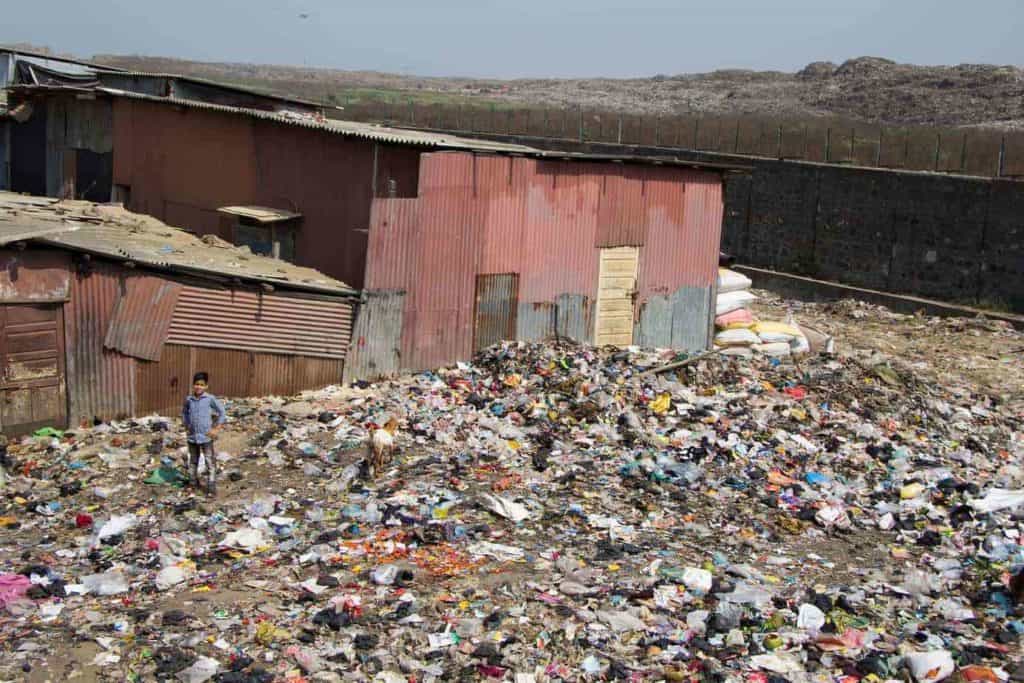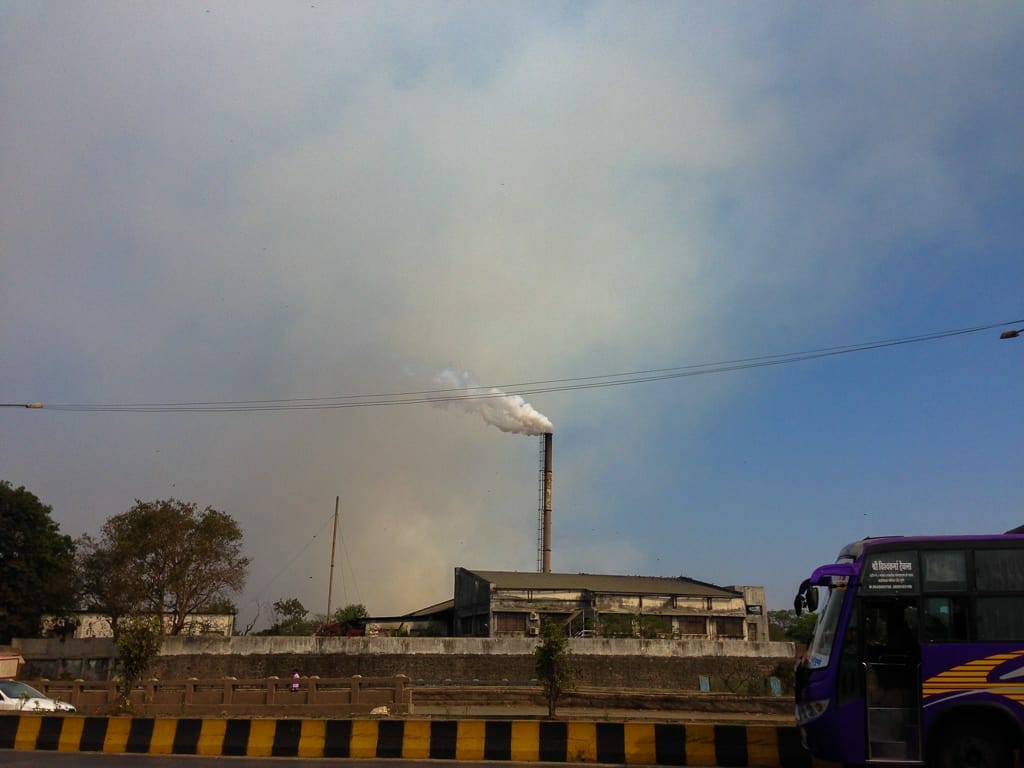The Deonar dumping ground has mountains of garbage, some reaching 18 floors high, having accumulated 18.35 million tonnes and counting. Years have passed since the government agreed to close the facility, Mumbai’s oldest. Its most recent deadline, 2023, is fast approaching. But it seems this time the Brihanmumbai Municipal Corporation (BMC) might just make the deadline, by switching to a waste-to-energy (WTE) plant.
Construction for the Rs 504 crore plant will begin in a month and a half, seven years after it was first announced. Just one clearance, from the Maharashtra Pollution Control Board (MPCB), remains.
Spread over 12 of the 120-hectare dumping ground in Govandi, the plant will have a capacity to process 600 tonnes per day – roughly the amount reaching Deonar today. Its combustible components will be burned to generate 4 megawatts (MW) of electricity, miniscule compared to the city’s daily energy consumption of 3,500 MW.
The BMC has to find a better way to deal with Mumbai’s solid waste, given the poor levels of waste segregation in the city. But is a waste-to-energy plant a wise alternative?

No smoke without a fire
“Yaha ke log slums me rehte hai aur zyada pade likhe nahi hai. (Most people here live in slums and are uneducated),” says Shaikh Faiyaz Alam, a resident of Shivaji Nagar and president of the NGO New Sangam Welfare Society. “Bohot kam logo ko plant ka pata hai. (Very few know about the plant.)”
Nestled along the edge of the dumping ground, Shivaji Nagar and Bainganwadi are two of the largest slum clusters of the ward. They house over 2 lakh people, breathing in the methane, hydrogen sulphide, benzene and carbon monoxide emitted during decomposition.
“Yahan ke locals ko kafi bimari ka saamna karta padta hai, jaise tuberculosis, asthma, blood pressure aur sare. (The locals suffer from a lot of diseases, like tuberculosis, asthma, blood pressure problems, and more),” says Faiyaz. A recent study found a greater prevalence of respiratory illness, eye irritation, and stomach problems among those within a kilometre of the grounds, compared to those of similar socio-economic conditions.
It is these residents the waste-to-energy plant will affect the most. But conspicuously, they have been absent in the planning process.
The mandatory public hearing meant to address the concerns of local residents was held on April 27th, 2021. But because of the pandemic, it was held on Zoom with an audience of 100 people. Only one of them was a resident of the area. The draft Environment Impact Assessment (EIA) report was also not shared publicly, violating the 2006 EIA notification.
“Plant ka location khachre ki dher me hai, jaha log ki nazar nahi padti hai. Jab instal hoga aur emissions nikalne lagenge, tab logo ko pata chalenga. (The location of the plant is in the middle of heaps of garbage, out of sight. People will find out about it when it is up and running and starts affecting them),” says Faiyaz.

The same view was echoed by those at Apnalaya, an NGO working with the urban poor in the ward since 1976. There was no news of the plant in the community, says Raghunandan Hegde, Director of Impact at the NGO.
Read more: People in this Mumbai slum barely make it to 40; here’s why
Making watts out of waste
Among the ways of dealing with waste, waste-to-energy plants rank low, second only to landfilling. “Incineration is an option to be considered only after implementing suitable material recycling and recovery systems, or where other better options for processing are not feasible and land availability is a problem,” states the Ministry of Urban Development’s Solid Waste Management (SWM) Manual.
This is because, alongside power, waste-to-energy plants also produce pollutants such as toxins, dioxins, furans, acidic gases, fly ash, etc. These are extremely harmful to the environment and humans. Dioxins and furans, in particular, are cancerous and can cause reproductive and neurological problems even at low levels.
Armed with these concerns and questions, Prasad Khale, Senior Conservation Officer at the environmental NGO, Conservation Action Trust (CAT), wrote to the Maharashtra Pollution Control Board (MPCB). He has received no reply yet.
For its part, the delayed EIA details the mitigation measures to minimise and compensate for the negative impact. A gas treatment system, dry lime, activated charcoal, and a 50m high chimney for SO2 and NOx emissions will curb air pollution. Temperatures will be controlled so as to prevent the formation of dioxins and furans. Effluents, also called leachate, will be re-circulated, evaporated, or treated. Greenery will be planted in the vicinity for aesthetics.
The State Environment Impact Assessment Authority (SEIAA) further directed the fly ash – the residue after burning – be used in brick manufacturing and road construction. The air, groundwater, and soil quality, and odour levels will also be monitored regularly. Meanwhile, Rs 12.40 crore has already been allotted for the environment management plan.
“Such systems are expensive and do not eliminate or adequately control the toxic emissions from highly chemically complex MSW,” contends Prasad in the letter. Nor have the measures and environmental clearances proved to be a failsafe. All three of Delhi’s functioning WTE plants were exceeding permitted pollution levels, the Centre for Financial Accountability (CFA) found. The plant in Okhla was releasing dioxins and furans a whopping 890% over the limit, and was in response just fined Rs 5 lakhs.

How practical is a waste-to-energy plant?
The practicality of the plant is also under question. Prasad’s letter points out that the waste received at the dumping ground is a mix of plastic, glass, metals, paper, rubber, cloth, electronics, and organic wet waste (food). The latter makes up the most of it at 73%, followed by construction waste at 17%. This adds another step to the working of the WTE plant: segregation and moisture reduction.
The plant plans to separate the biodegradable waste mechanically, turning it into compost or biogas. The rest will be fed to the furnace. But Prasad’s letter warns, “This process would require more energy to be invested than what would be produced.”
The WTE plants in Delhi, revealed CFA, were underproducing energy even when burning more waste than their stated capacity. Besides the wastage implied, the energy produced is several times more harmful for the environment too. Each unit will emit 68% more greenhouse gases than a coal powered plant, and is on average three times more expensive.
Despite these contentions, the BMC is lavish in its claims of benefits of the waste-to-energy plant. A reduction in CO2, smoke, respiratory diseases, tuberculosis, child labour, and rag-picking are promised in the EIA report.
But these are due largely to the reduction in waste sent to the dumping ground in the recent past. More than half the 3100 tonnes sent per day in 2018, is now routed to the waste processing facility at Kanjur. Children rooting through the garbage for recyclables is at an all-time low, which Faiyaz attributes to the reduced waste coming to the ground. Security at the grounds has been ramped up. Those desperate to scavenge bribe the guards with Rs 50, those that sneak in are beaten, detained, and sent back. Small fires, which were lit by the waste-pickers to melt away the lighter trash, have also dwindled.

A more polluting source – the biomedical waste incinerator
The dumping ground, however, is not the main cause of pollution in the area. That honour goes to the biomedical waste treatment facility a few kilometres away, operated by the company SMS Envoclean Pvt Ltd. All of Mumbai’s medical waste is incinerated here, resulting in thick smoke.
But it, too, is on its way out.
After the pandemic nearly doubled the medical waste coming to the facility, Faiyaz and other residents complained to the Central Pollution Control Board (CPBC). Spearheaded by Abu Asim Azmi, MLA of Mankhurd Shivajinagar, the complaint escalated to a legal notice. By November 2020, the facility was asked to move 70 km out of Mumbai, to Khalapur, by February 2022. There is little indication of the move happening, says Faiyaz.
But it is in Asim that the waste-to-energy plant might find its staunchest opponent. “Hum banne nahi denge isko yaha par. Hum janta ko leke andolan karenge aur court me jayenge. (I will start a people’s movement and go to court, but I won’t let the plant be built here),” he says.
The BMC has, however, already started gearing up for a second, bigger, waste-to-energy plant in Deonar. While the specifics are subject to change, the kickstart of the tendering process hints that it may not take as long this time.
It is better late than never. Let we all citizens of India Decide that we will successfully deal with our own creation of waste at source. Let every Coop.Hsg Soc or gali mohallas take up th collection and segregation of bio degradable and non biodegradable waste at Housing Soc level. Segregate all wet waste like food and vegetable waste at society level and treat the weet wate by Anaerobic Digestion process using small Bio gas Plants like 25 Kgs to 100 Kgs capacity per day and treat it there itself use the emerging Bio gas for society lighting or as cooking gas for watchman staying and protecting Society or give it to Mahanagar gas. Actually This project can be taken up Mahanagar Gas in coolaboration with Local civic bodies. Indore Bio CNG Plant can be copied and Mumbai wil really become swachch and Sundar a dream of every mumbaikar since last 40 years or so and of course that being the main concept proposed by SHIVSENA Ruling BMC for last 20 years or more.Our yound Environment Minister Shri Aditya Thakare can take the Oath that He will not take any sleep till he realises the GOAL of Clean and Green Mumbai by continuous dedicated work Even Plastics and rubbers can be converted to raw mineral oil and cobustible gases using thermal or Microwave pyrolysis.Let our young leaders raelize that climate is worsening day by day as we have not taken any positive step so far.GORAI Dump Ground Management plan could have been followed for Deonar and Kanjur Dump Grounds. Alsoextract and used Land Fill gases which otherwise go into atmospjere and spoil or heat it rlentlessly. All Technologies are available only leadership with determined and dedicated commitments needed. Completion can not be left to take decades otherwise all our youngsters wuill curse us that we left unlivable planet for them.